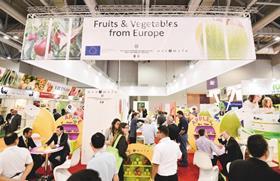
Whether it’s the so-called BRIC countries (Brazil, Russia, India and China) or the more recently coined MINTs (Mexico, India, Nigeria and Turkey), all eyes in the fresh produce industry are seemingly transfixed by the emerging markets.
For many exporters, the Russian embargo on produce from sources including the EU and the US has heightened the need to explore new outlets.
According to one Polish company, the embargo has opened the eyes of Polish exporters to other markets. An over-reliance on one particular market, no matter how large, close or profitable, is now rightly regarded as a risk worth avoiding.
Even countries unaffected by the Russian ban, such as Turkey, have seen increasing interest in alternative markets. This is partly a result of the overall impact of the embargo on the European market, which has become saturated with many varieties of fruit, including apples and pears.
However, it is also a trend that has been noticeable for a number of years, and is behind the impressive growth witnessed by exhibitions such as Asia Fruit Logistica in Hong Kong.
A certain amount of saturation has naturally occurred in many western markets. There are only so many avocados, for instance, that a market can absorb before it becomes extremely difficult to increase consumption any further.
In addition, economies in regions like East Asia, as well as the Middle East, have been performing better than in Europe and the US ever since the economic crisis struck back in 2008.
Furthermore, the growing middle class in countries including India and China has attracted unsurprising attention from exporters worldwide.
Over the next couple of weeks, Eurofruit will be examining the potential offered by choice Asian, Middle Eastern and African markets, while shining a light on the exporters intent on boosting business there.



